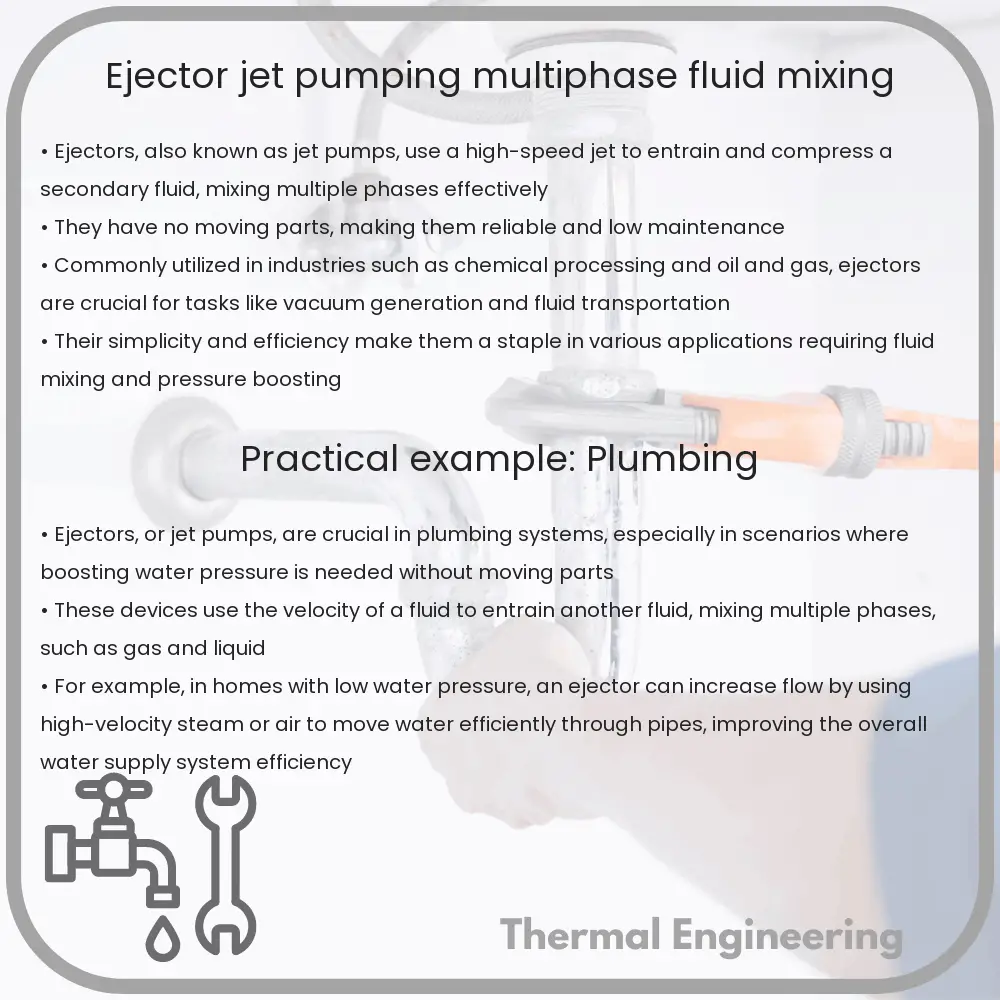Learn how ejectors and jet pumps operate using fluid dynamics to enhance fluid and gas pressure in industrial processes.

Understanding Ejectors and Jet Pumps in Engineering
Ejectors and jet pumps are devices commonly used in various industrial applications to move, mix, or increase the pressure of fluids and gases. These devices operate on the principle of fluid dynamics and do not have moving parts, which makes them highly reliable and low maintenance solutions for a wide range of processes. In this article, we will explore how ejectors and jet pumps work, their applications, and the basics of multiphase fluid mixing.
How Ejectors and Jet Pumps Work
An ejector, also known as a jet pump, uses the velocity of a motive fluid to draw in and entrain a secondary fluid (suction fluid) and then discharges the mixed fluid at a higher pressure. The process involves three main stages:
- Venturi effect creation: The motive fluid is accelerated through a nozzle, converting its pressure energy into velocity energy. This acceleration results in a low-pressure zone that draws in the secondary fluid.
- Mixing chamber: The high-velocity motive fluid mixes with the secondary fluid in the mixing chamber. The kinetic energy of the motive fluid is partly transferred to the secondary fluid, increasing its velocity.
- Diffuser: The mixed fluid then enters a diffuser where the velocity energy is partly converted back into pressure energy, resulting in a fluid stream that exits at a higher pressure than the secondary fluid’s initial pressure.
The general performance equation for an ejector or jet pump is expressed as:
Pout = Pmotive + (ρ*v2/2)
where Pout is the output pressure, Pmotive is the motive fluid pressure, ρ is the fluid density, and v is the velocity of the fluid.
Applications of Ejectors and Jet Pumps
Ejectors and jet pumps are used in various applications, including:
- Chemical processing: To mix or circulate chemicals without exposing them to mechanical agitation.
- Petroleum industry: For transporting crude oil, gas lifting, and flare gas recovery.
- Power generation: In power plants for extracting condensates and cooling steam.
- Vacuum systems: To create vacuum conditions in scientific and industrial processes.
- Water treatment: For aeration and mixing in water and wastewater treatment facilities.
Multiphase Fluid Mixing
Jet pumps and ejectors are also adept at handling multiphase fluid mixing, which involves combining fluids in different phases—solid, liquid, or gas. The nozzle design and the operational parameters need to be meticulously adjusted to ensure efficient mixing and transport of multiphase mixtures. The ability to handle different phases without mechanical agitation or moving parts makes ejectors suitable in environments where high reliability and low contamination are crucial.
In summary, ejectors and jet pumps are versatile and robust devices that leverage simple fluid dynamics principles to perform essential functions in numerous industrial and scientific applications. Their efficacy in mixing and handling multiphase fluids makes them indispensable in processes where contamination and maintenance issues must be minimized.
Understanding the basic workings and applications of these devices not only enriches one’s engineering knowledge but also opens avenues for innovation in fluid handling and process engineering.